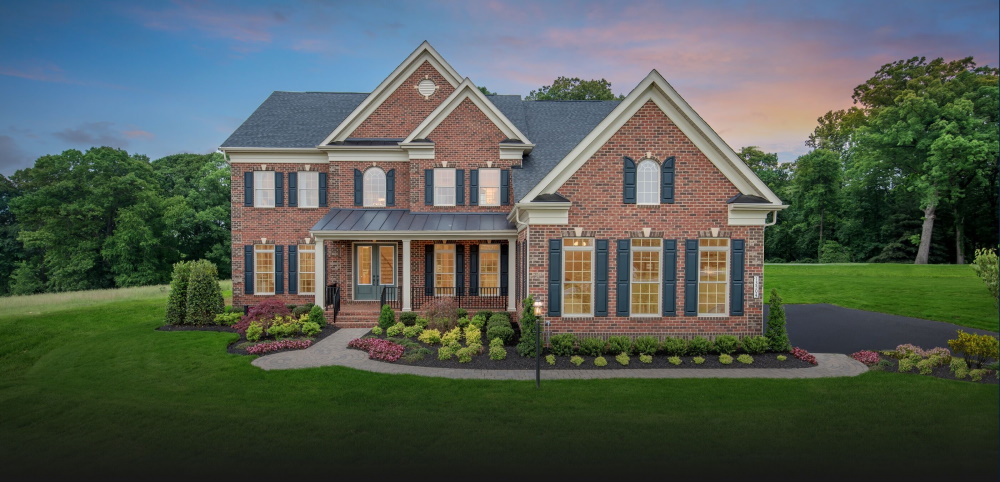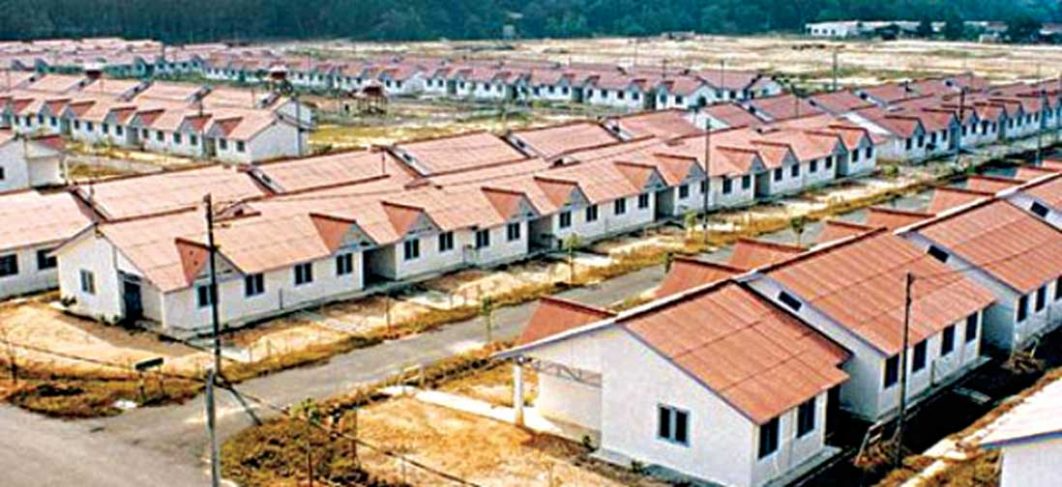florarispe3534
florarispe3534
How to use Rehab Loans for Investment Properties: a Complete Guide

Rehab loans for financial investment residential or commercial properties offer a special chance for real estate financiers to purchase and remodel residential or commercial properties with capacity. These loans integrate the purchase rate and renovation costs into a single mortgage, making it simpler to finance fixer-uppers and turn them into profitable financial investments. With options like the FHA 203(k) loan, investors can access funds for home enhancements and increase the worth of their investment residential or commercial properties.
This guide will check out the key factors to consider before getting a rehab loan, strategies for finding rehab-eligible residential or commercial properties, and ideas for constructing a trustworthy rehabilitation team. It will also cover long-term success strategies with rehabilitation finance and offer insights on making the most of returns on investment residential or commercial properties. By the end, readers will have a thorough understanding of how to use rehab loans to grow their realty portfolios effectively.
Key Considerations Before Getting a Rehabilitation Loan
Assessing Your Investment Goals
Before diving into rehab loans for financial investment residential or commercial properties, it’s crucial to examine your financial investment objectives. Rehab loans can be a powerful tool to build wealth rapidly, especially when handling fixer-uppers. These residential or commercial properties frequently feature less competition, enabling financiers to develop considerable equity in a brief time through strategic enhancements. However, it’s important to consider whether the prepared restorations will increase the residential or commercial property’s value and if you’ll still earn a profit after accounting for all costs.
Evaluating Your Financial Situation
When considering rehab finance, evaluating your financial standing is vital. Lenders usually take a look at credit history, income, and debt-to-income ratios. For an FHA 203(k) loan, a credit score of at least 500 is needed, with a minimum down payment of 3.5% for ratings above 580. It’s also essential to consider the expenses of restorations, possible unforeseen expenses, and the higher rate of interest frequently connected with rehab loans. Creating a comprehensive budget that accounts for all prospective expenses, including materials, labor, and permits, is vital for success.
Understanding the Risks Involved
While rehab loans use significant capacity, they include fundamental threats. Market variations can affect residential or commercial property worths, and unanticipated renovation problems can rapidly reduce earnings. It’s essential to perform thorough research and be gotten ready for these possibilities. Additionally, the renovation process can be complicated, requiring cautious preparation and execution. Working with experienced experts, consisting of specialists and property agents familiar with rehab tasks, can help mitigate these risks and guarantee a smoother renovation process.
Strategies for Finding Rehab-Eligible Properties
Dealing With Real Estate Agents
Real estate representatives can be valuable allies in the mission to discover rehab-eligible residential or commercial properties. They often have access to listings that aren’t openly available and can bring offers straight to investors. Agents acquainted with rehab projects can help identify residential or commercial properties with capacity for significant value increase through renovations. By partnering with representatives, financiers can possibly double their commission, producing a win-win scenario. This partnership can cause discovering residential or commercial properties that might sell for twice their present worth after rehab.
Searching Foreclosure and Short Sale Listings
Foreclosures and brief sales present distinct chances for investors seeking rehab-eligible residential or commercial properties. These residential or commercial properties frequently need restorations, making them perfect prospects for rehab loans such as the FHA 203(k) loan. Foreclosed homes are typically sold by banks excited to recover their losses, potentially causing below-market costs. Short sales, where homeowners offer for less than they owe on the mortgage, can also use bargains. Investors can discover these listings through online resources, bank websites, and government firms like Fannie Mae and Freddie Mac.
Networking with Other Investors
Building relationships with fellow financiers can open doors to valuable chances in the rehab residential or commercial property market. Joining property investment groups and participating in industry events can help broaden your network and gain insights into possible offers. Collaborating with other financiers on joint endeavors allows for pooling resources and dealing with larger tasks. Investment clubs use an encouraging neighborhood for sharing knowledge and participating in group financial investments. By cultivating these connections, financiers can remain informed about market patterns and access to or commercial properties with rehab potential.
Building Your Rehab Team
Finding an Experienced Lender

When seeking rehabilitation loans for financial investment residential or commercial properties, it’s important to discover a lender experienced with FHA 203(k) loans. These lenders understand the subtleties of remodelling funding and can guide investors through the complex procedure. Search for loan providers who have effectively finished multiple 203(k) projects and can supply a list of contractors they have actually worked with. An educated lender will assist you navigate the documents and ensure all requirements are satisfied for a smooth loan approval process.
Selecting Qualified Contractors
Choosing the right specialist is important for the success of your rehabilitation task. When handling FHA 203(k) loans, it’s important to deal with professionals knowledgeable about the program’s requirements. Verify their qualifications, including licenses, insurance, and recommendations. Don’t hesitate to request examples of their previous 203(k) projects. Remember, the least expensive alternative isn’t constantly the best; focus on quality and experience to avoid expensive errors. A reputable contractor can make or break your financial investment residential or commercial property remodelling.
Working with a Realty Attorney
While not always required, seeking advice from a realty lawyer can be a smart choice when using rehab loans for investment residential or commercial properties. An attorney can evaluate contracts, ensure appropriate title transfers, and assist fix any legal problems that may develop throughout the remodelling process. They can likewise assist with drafting leases if you plan to rent out the residential or commercial property before offering. Having legal competence on your side can secure your investment and supply peace of mind throughout the rehabilitation process.
Long-Term Success with Rehab Loans
Scaling Your Investment Portfolio
Rehab loans for investment residential or commercial properties provide a powerful method for investors to maximize their returns and grow their property portfolios. By leveraging these loans, financiers can increase their buying power and achieve significant returns on their investment. The BRRRR technique (Buy, Rehab, Rent, Refinance, Repeat) is a popular method for scaling a financial investment portfolio utilizing rehab finance. This method allows investors to acquire undervalued residential or commercial properties, remodel them, and develop equity through appreciation and rental income.
Refinancing Strategies After Renovation
After completing restorations, financiers have several choices to think about. One technique is to re-finance the residential or commercial property to access the newly developed equity. This can be done through a cash-out refinance, which allows investors to take out funds for future investments or improvements. However, it is very important to note that many lending institutions require a loan-to-value ratio of no more than 80 percent. Refinancing can likewise offer an opportunity to protect more beneficial loan terms or get rid of personal mortgage insurance, potentially leading to reduce regular monthly payments.
Tax Implications of Rehab Investments

Investors ought to understand the prospective tax implications related to rehabilitation financial investments. Using funds from a cash-out re-finance for home enhancement jobs might produce opportunities for tax reductions. Additionally, energy-efficient upgrades made throughout remodellings might get approved for energy tax credits. However, tax laws are complex and ever-changing, so it’s crucial to seek advice from a tax expert for tailored advice on potential advantages or implications associated with rehab financial investments.
Maximizing the Potential of Rehab Loans: Key Steps for Long-Term Investment Success
Rehab loans for financial investment residential or commercial properties provide an effective tool to grow your property portfolio and boost returns. By integrating purchase and renovation costs into a single mortgage, these loans make it simpler to finance fixer-uppers and turn them into rewarding investments. With cautious planning, a solid group, and wise methods, investors can utilize rehab loans to create considerable worth in residential or commercial properties and construct long-lasting wealth through real estate.
To take advantage of rehab loans, it’s essential to evaluate your financial investment objectives, understand the risks, and build a reliable group. Finding the right residential or commercial properties, dealing with experienced professionals, and planning for long-lasting success are essential steps in the procedure. By leveraging these loans sensibly and remaining notified about market patterns and tax ramifications, investors can turn rehab projects into rewarding opportunities and progressively grow their realty portfolios.
Prequalify Now!
FAQs
1. What kinds of residential or commercial properties qualify for rehab loans?
Rehab loans, such as the FHA 203(k), usually cover single-family homes, multi-family residential or commercial properties (as much as 4 units), and specific mixed-use residential or commercial properties. However, some lending institutions may also consider distressed industrial residential or commercial properties for rehab loans under particular programs.
2. How long does it take to close on a rehab loan?
The timeline for closing on a rehab loan can be longer than a standard mortgage due to the extra documentation and evaluation procedures included. Usually, it may take in between 45 to 60 days to close on a rehabilitation loan, depending on the intricacy of the job and loan provider requirements.
3. Can I live in the residential or commercial property while renovating with a rehab loan?
Yes, with certain rehab loans like the FHA 203(k) loan, you are allowed to live in the residential or commercial property during restorations, provided the home stays habitable. However, substantial renovations might require momentary relocation till the work is finished.

4. Exist any restrictions on the types of restorations enabled with rehab loans?

Rehab loans typically cover important repair work that enhance the residential or commercial property’s worth, safety, and livability. Cosmetic upgrades, structural repairs, and energy performance improvements are typically allowed. However, luxury additions, like pool or outside cooking areas, might not be eligible under specific rehab loan programs.

5. What happens if the remodelling expenses surpass the initial loan quantity?
If remodelling costs surpass the initially approved loan amount, you may need to cover the extra costs out of pocket. It’s important to have a comprehensive budget and contingency strategy in place to account for unforeseen costs during the renovation procedure.



